
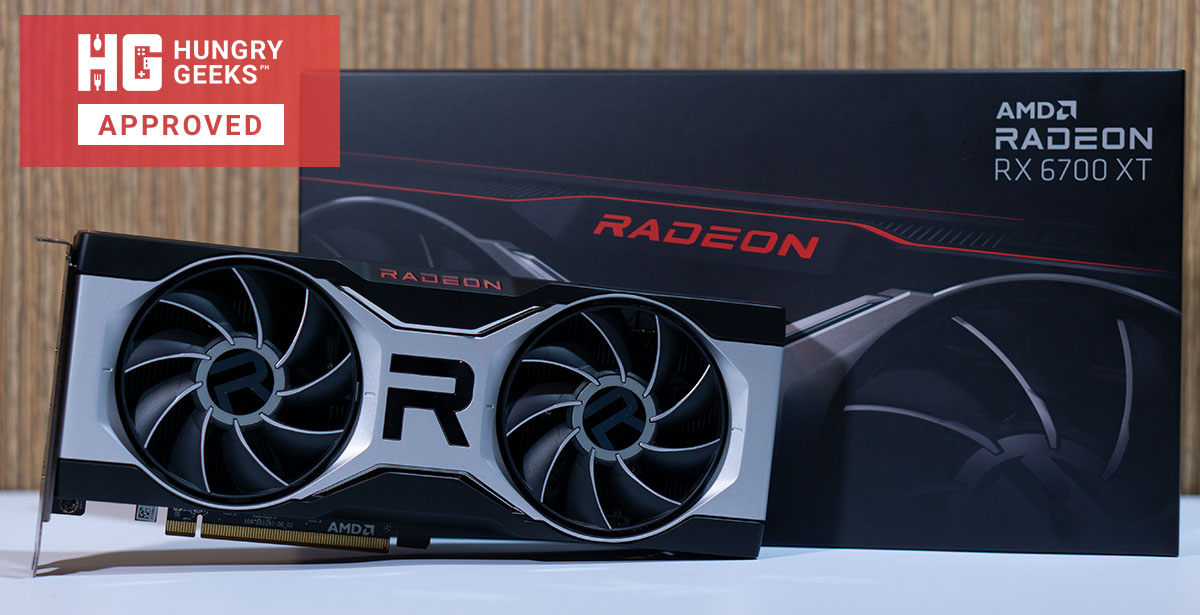
AMD’s Big Navi architecture has already proven that it can trade punches with the Green Team’s offerings as shown by the RX 6900 XT. This time around, however, we will be taking a look at something more modest: the AMD Radeon RX 6700 XT. Will it be able to deliver a top-notch gaming performance given that it is sandwiched between the RTX 3070 and the RTX 3060 Ti?
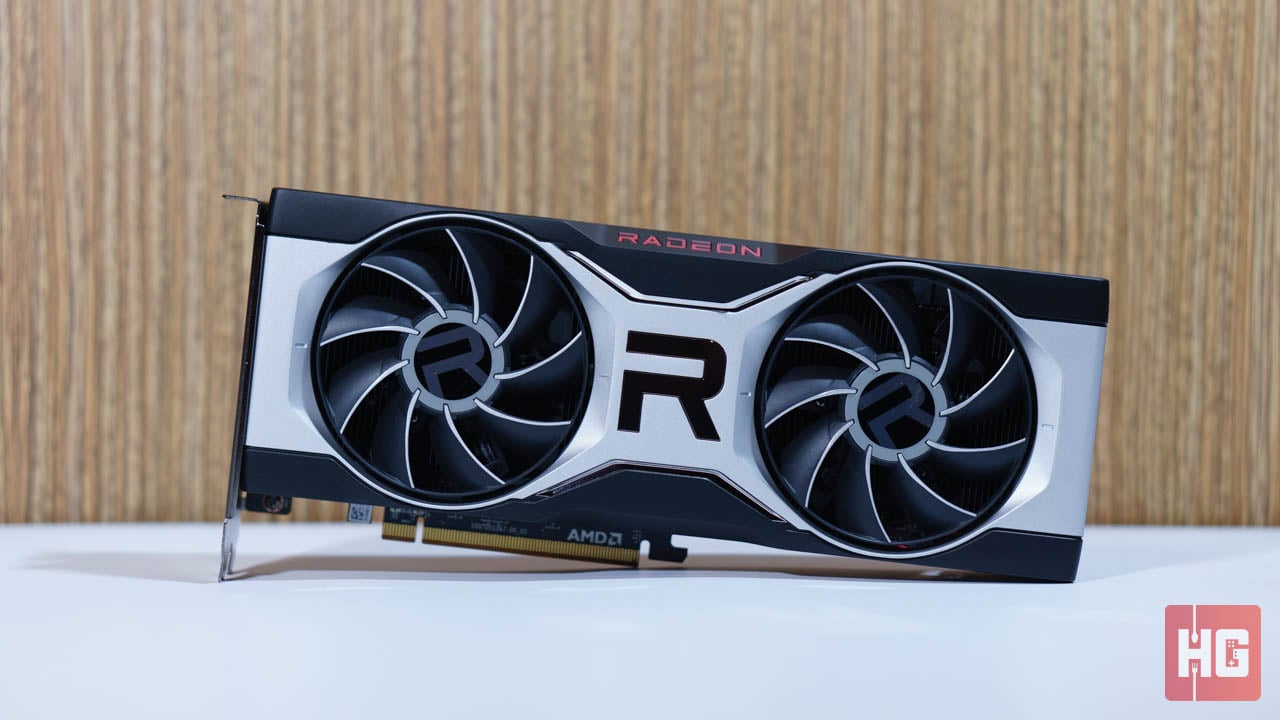
| GPU | Navi 22 |
| Architecture | RDNA2 |
| Manufacturing Process | 7nm TSMC |
| Boost Clock | 2581Hz (Boost), 2424MHz (Gaming) |
| Shader Processors | 2560 |
| Texture Units | 160 |
| ROPs | 64 |
| Compute Units | 40 |
| Raytracing Cores | 40 |
| Memory | 12GB GDDR6, 16Gbps |
| Memory Bus | 256-bit |
| Infinity Cache | 96MB |
| TDP | 230W |
| Power Connectors | 1x 8-pin, 1x 6-pin PCIe |
| Display Connections | 3x DisplayPort 1.4a, 1x HDMI 2.1 |
The Navi 22 on the RX 6700 XT has been significantly cut down compared to its Navi 21 brothers. It now has half the stream processors and compute units of the Big Navi flagship at 2560 and 40, respectively. Clock speeds, however, are the highest of the lot reaching up to 2581MHz in its Boost Mode.
Surprisingly, VRAM only took a 4GB reduction now resting at 12GB GDDR6, which is 4GB more than its direct competitors like the RTX 3070 and RTX 3060 both of which only has 8GB of GDDR6 VRAM. Its Infinity Cache and Bus Width, however, have been reduced to 96MB and 192-bit, respectively.

AMD’s RDNA2 architecture, also known as Big Navi, is essentially the next evolution of RDNA introduced with the Radeon 5000 series. It still uses a 7nm lithography while becoming more efficient than its predecessor. Their new generation GPUs are also boasting GPU clock speeds well beyond the 2000MHz mark, which should deliver faster performance across the board.
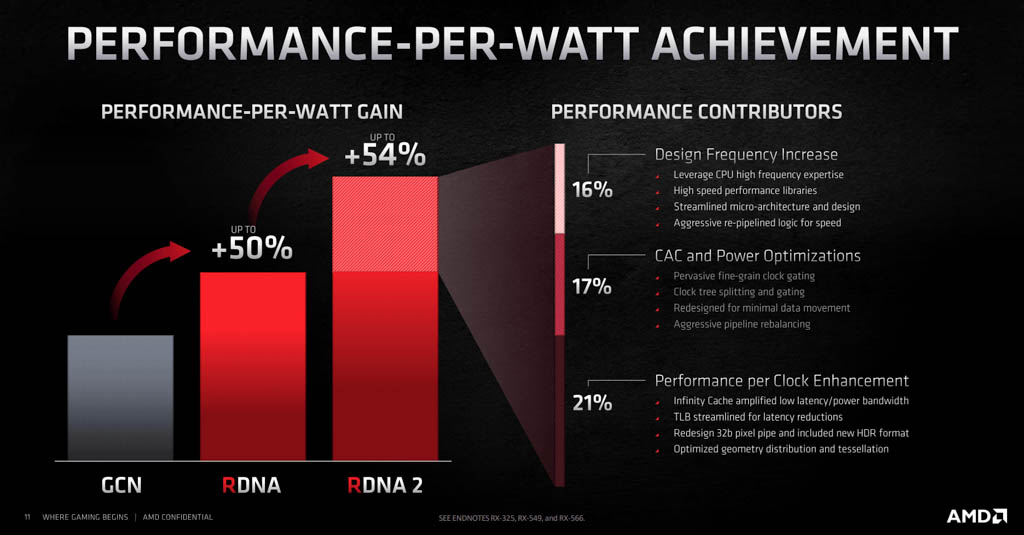
Overall, AMD is promising up to 54% gain in performance-per-watt thanks to clock enhancement, frequency increase, and varying optimizations.

One of the solutions that AMD implemented on RDNA2 is the usage of the Infinity Cache. Not to be confused with the Infinity Fabric found on their CPUs, Infinity Cache uses a 128MB cache on the die itself in order to bridge the size between of the VRAM and the traditional L2 cache found on GPUs. This allows for better bandwidth, lower latency, and faster memory access.
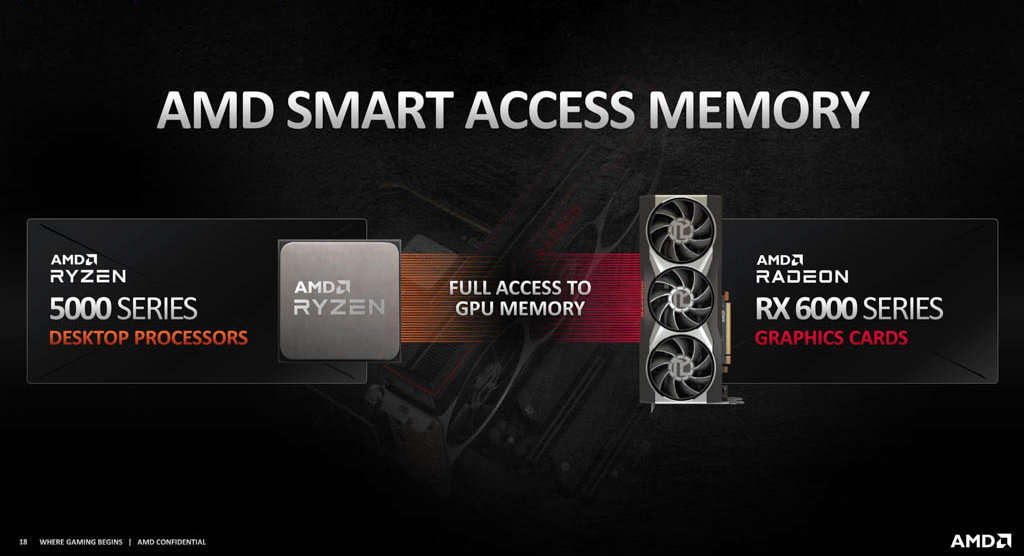
Transfers between the CPU and GPU are normally limited to a 256GB chunk. AMD’s Smart Access Memory (SAM) combines the memory of the CPU and GPU to increase that limit to reduce buffering and latency. AMD claims that SAM provides up to 10% of additional framerate to games but this increase is much more noticeable to higher resolutions.
At this time, this feature is only compatible between the RX 6000 series GPUs and Ryzen 5000 series processors on X570 boards. AMD, however, is working hard to have it compatible with NVIDIA and Intel platforms.

Big Navi will officially support ray tracing in games albeit in a lesser extent compared to the competition’s latest offerings. AMD is implementing dedicated RT cores on RDNA2-based GPUs in order to improve performance of ray tracing effects.
Deep Learning Super Sampling (DLSS) employs the use of AI and machine learning to render games at a lower resolution and outputs them at a higher resolution without sacrificing details. This means that you get the detail found on higher resolutions while still maintaining higher frame rates. At this time, however, DLSS exclusively works on select NVIDIA GPUs. AMD, on the other hand, is working on their own alternative called FidelityFX Super Resolution.
Details are still sparse on the FidelityFX Super Resolution as it is currently in development. But AMD will be making it fully open source in order to allow developers to more easily implement them on any GPU. This also allows the technique to be available to consoles as they largely use the same architecture.
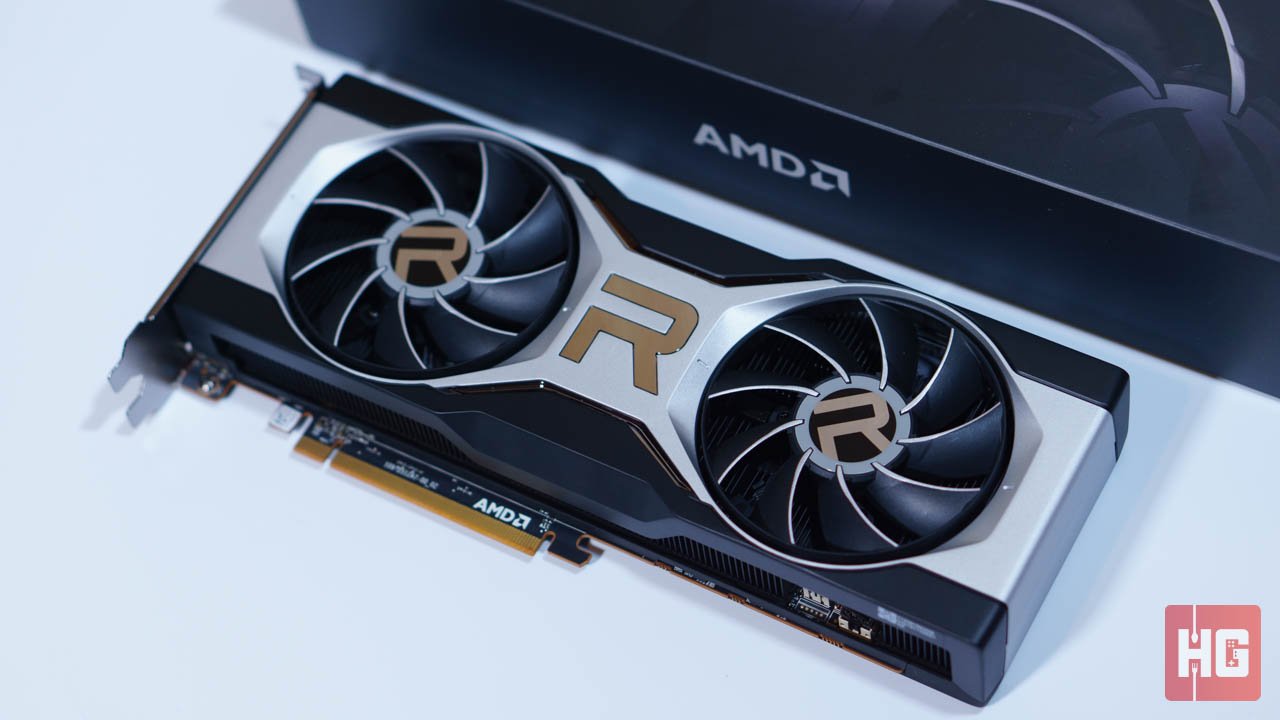
The AMD Radeon RX 6700 XT still sports predominantly black and silver design with red accents that other reference cards in the range have. There is lighting on the card, but it has been limited to Red instead of the usual RGB on the Radeon logo at the side.
One of the significant changes on the card is the fan design. While they still have the ring at the edges to direct airflow, the number of fans has been cutdown to just two. The space where the other fan used to be is now occupied by the Radeon logo.

Cooling shouldn’t be too much of a problem since the card’s TDP has been lowered down to only 230W. Its fans also support Zero RPM mode until the card hits 50°c. AMD claims that the card’s new fans are up to 4dB quieter compared to the RX 5700 XT.

The whole card feels solid thanks to an aluminum build. Its backplate as well is made out of aluminum that lends to a more premium feel as well as provide rigidity when the card is mounted on your PC. Like the 6900 XT, the clean look of the backplate is messed up by the stickers.
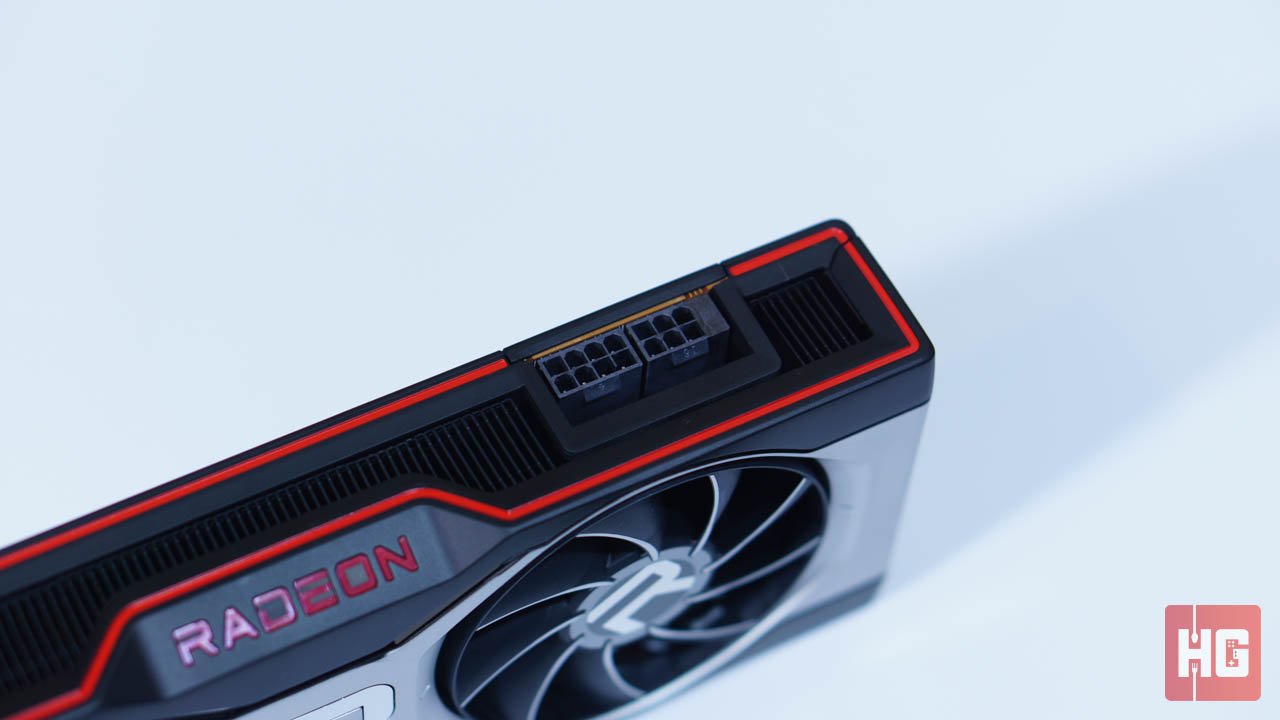
Thanks to the aforementioned lower total board power, the RX 6700 XT only needs an 8+6-pin PCIe configuration to supply power. Most power supplies that have the appropriate connection should be able to power the card but AMD is playing it safe and recommending a 650W PSU to gamers.
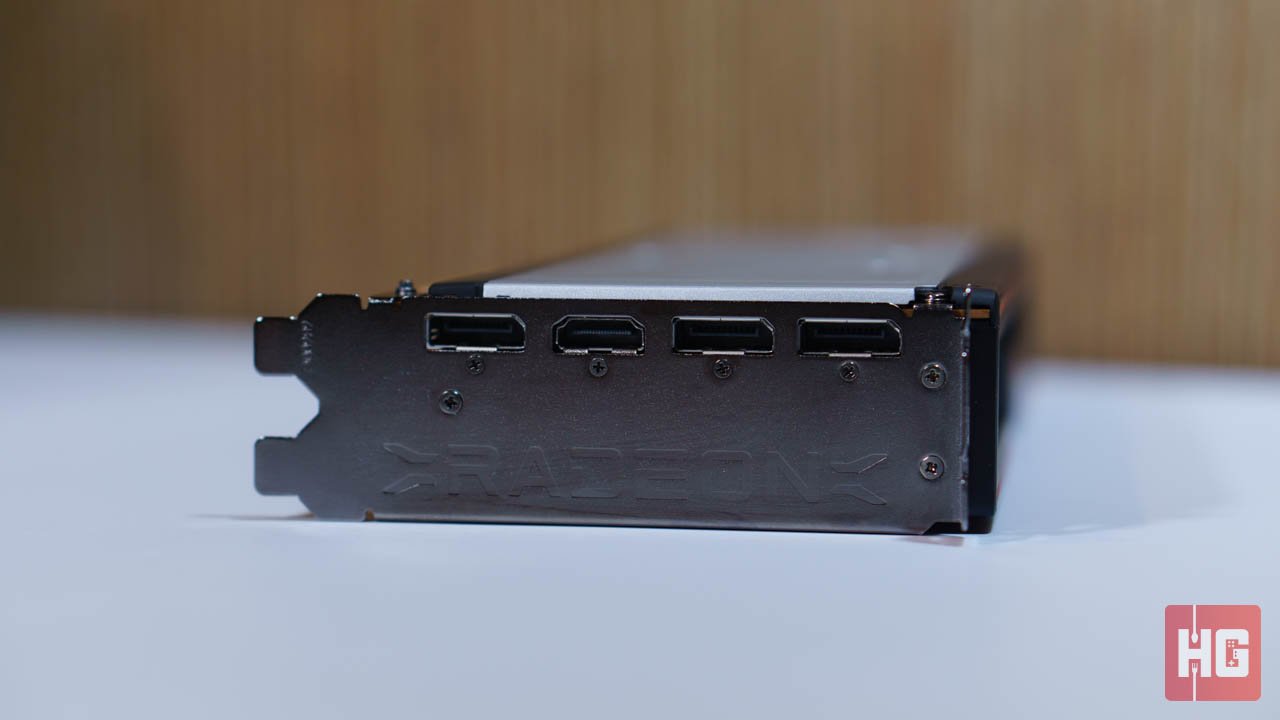
The card is also dropping the USB Type-C connector at the back and is settling for a more traditional connector setup of a single HDMI 2.1 port and three DisplayPort 1.4a connectors. You’ll also notice that AMD has removed any kind of grilles at the back due to the open cooling design of the card.
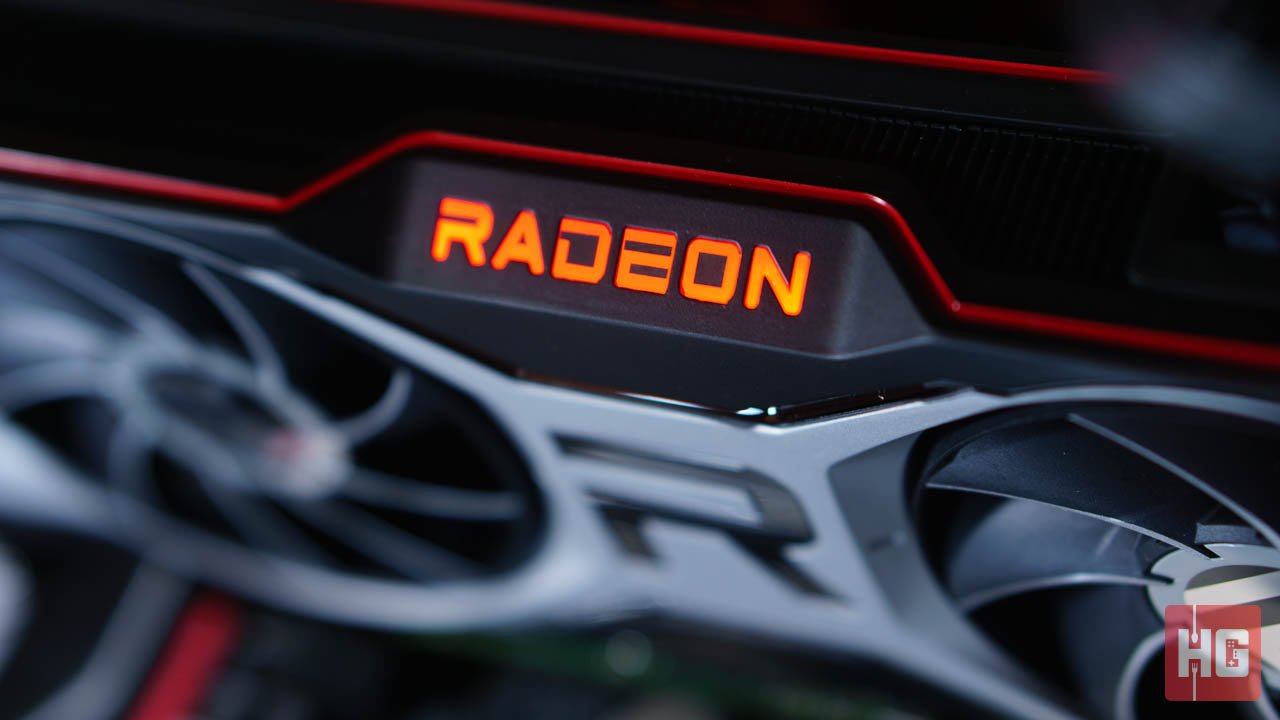
Testing the AMD Radeon RX 6700 XT will be done by running it through a variety of tests, which include synthetic benchmarks and games running on DirectX 11, DirectX 12, and Vulkan APIs. Benchmarks were in a 24°c room using our test bench composed of the consisting of the following hardware:
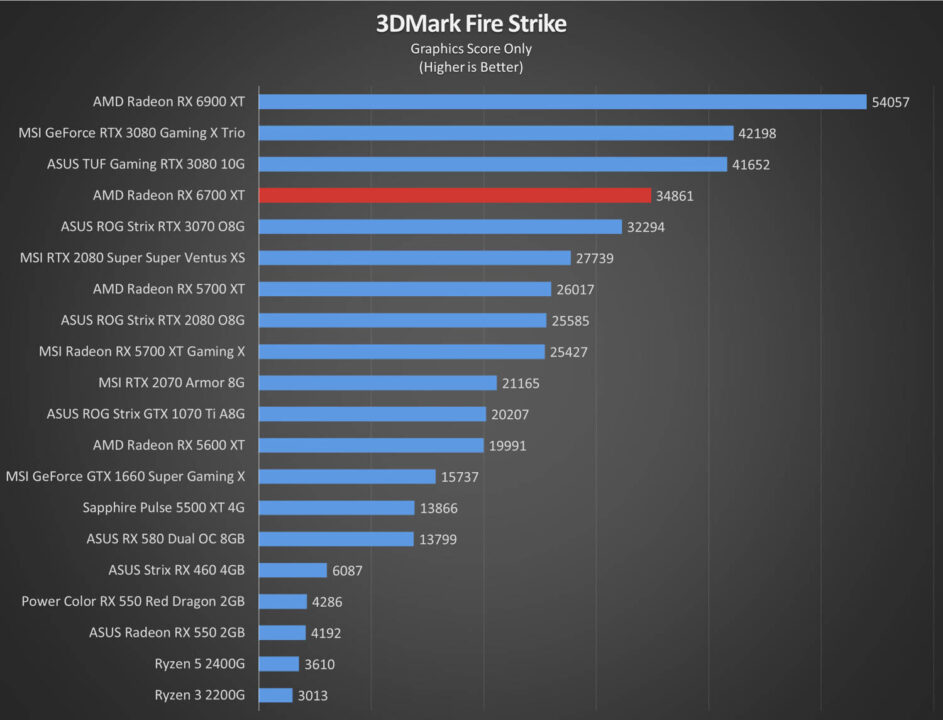


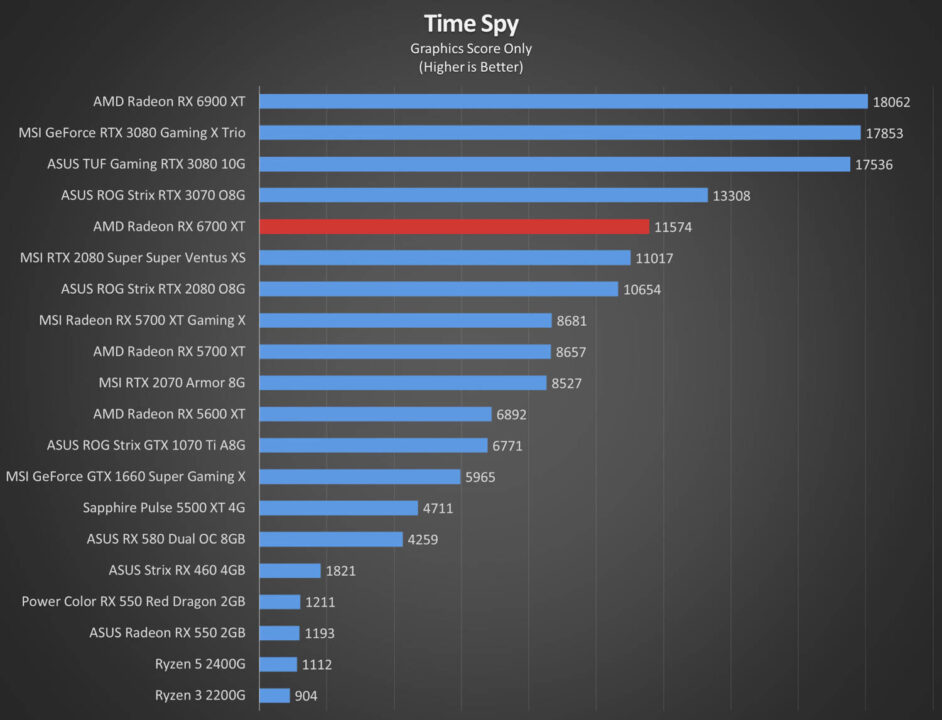
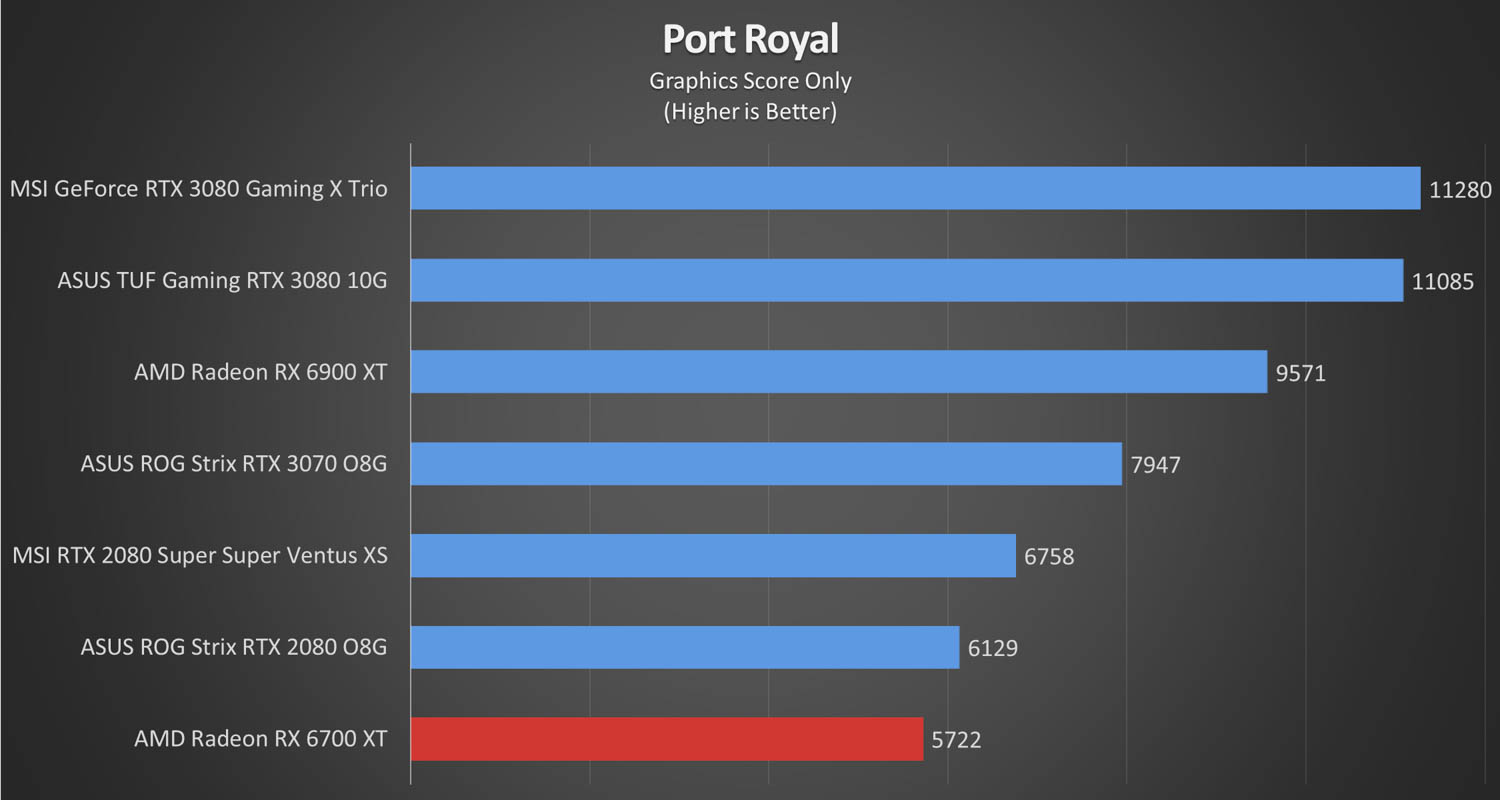
The AMD Radeon RX 6700 XT brings a great showing on synthetic benchmarks. It places itself just ahead of the RTX 3070 on both 3DMark Fire Strike on all resolutions as well as on the DirectX 12-based Time Spy.
Ray Tracing performance on Port Royal, however, leaves a lot to be desired. It places last on the charts even behind on last generation’s RTX 2080 Super. Its nearest competitor on our list, the RTX 3070, leaves it behind on Ray Tracing by a wide margin.


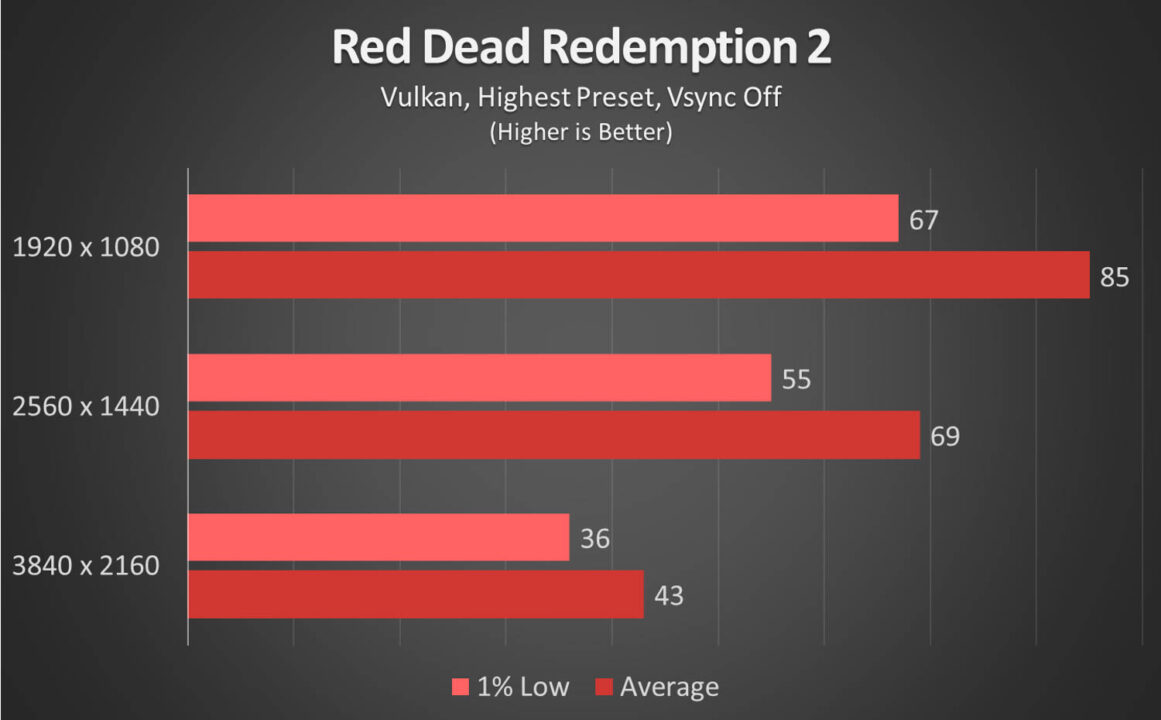
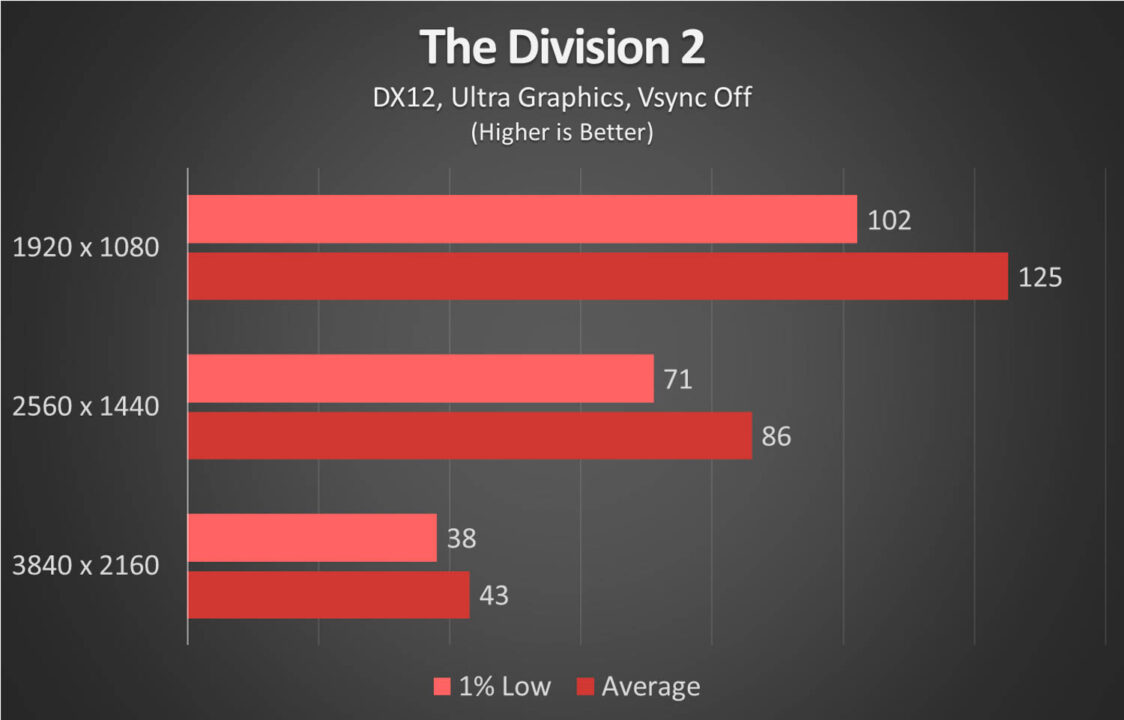
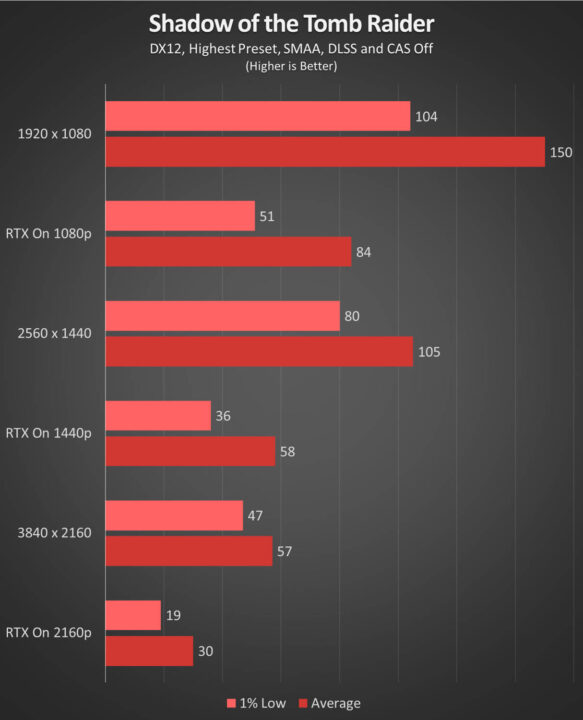

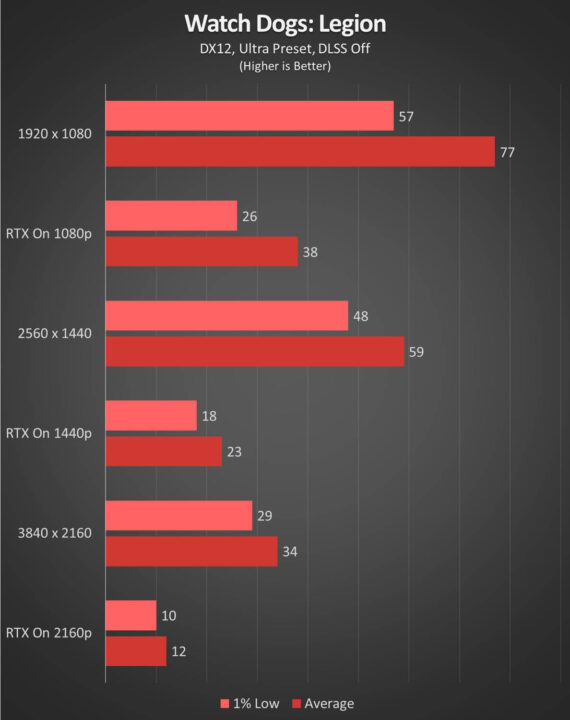
The 80fps+ mark is easily reached by the RX 6700 XT on triple A titles at 1080p with all the graphics settings turned all the way up. 1440p performance is also quite decent going above the recommended 60fps most of the time. 2160p or 4K, however, does leave room for a bit of improvement but framerates can be easily raised by changing a couple of settings or two.
As shown by Port Royal, Ray Tracing is not the strong suit of the AMD Radeon RX 6700 XT. A significant chunk of performance is taken out by the effect across on all games even dropping down to sub-30fps on occasions in titles such as Watch Dogs: Legion and Metro Exodus.
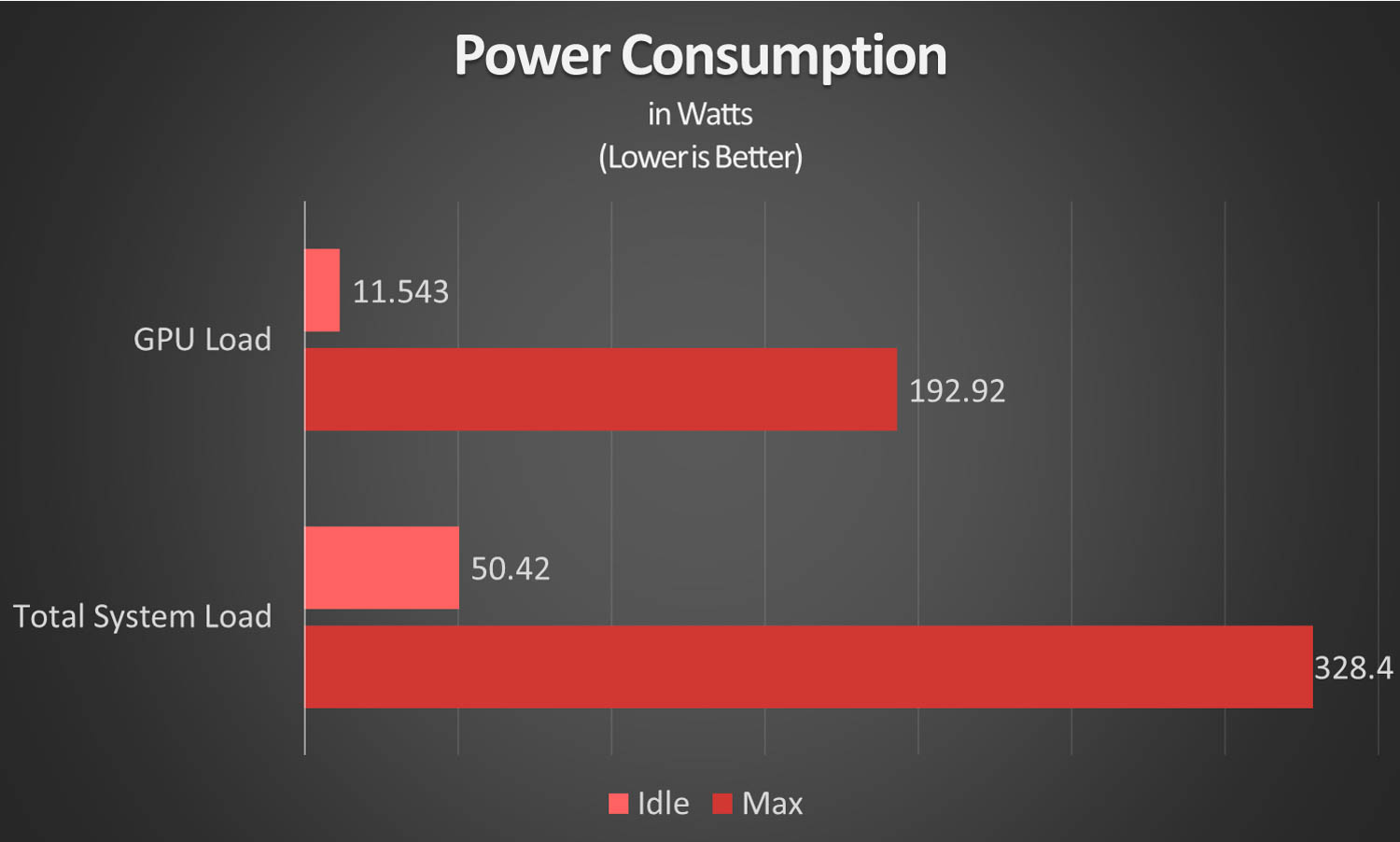
The RX 6700 XT is fairly power efficient based on our measurements. Our readings show that it consumes below 200W of power while fully under load. This is significantly lower than its rated TDP of 230W. Idle consumption is surprisingly reasonable at just around 12W when nothing significant is running on our test bed.
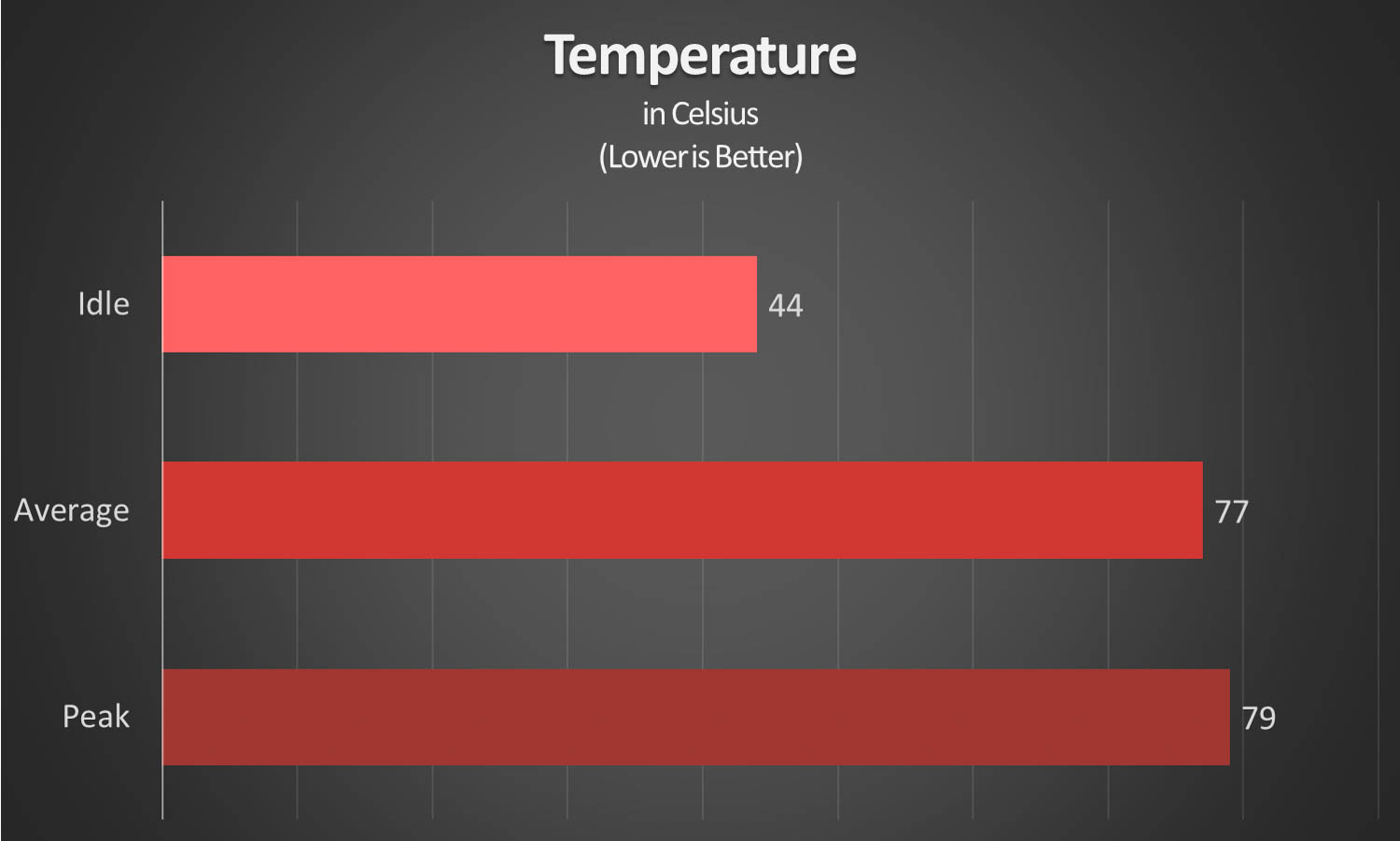
As for heat management, the card is somewhat on the toastier side of things but still manageable. It peaks at around 79°c with an average of 77°c under full load. As mentioned, its fans do not spin until it hits 50°c. This means that at idle, the card is completely silent at just 44°c.

The AMD Radeon RX 6700 XT shares a lot of characteristics with the RDNA2 flagship, the RX 6900 XT. It is able to deliver serious performance on DirectX 11, DirectX 12, and Vulkan games. But when the fancier graphical stuff comes into play – like Ray Tracing – the GPU just tanks performance across the board.
AMD still has a bit of catching up to do when it comes to modern GPU tricks. Though Ray Tracing does tank performance on NVIDIA cards as well, framerates can be increased by using DLSS without much of image degradation. The Red Team does have FidelityFX Super Resolution at work to help them in raising framerates but at this time, it has not been released to the public yet.
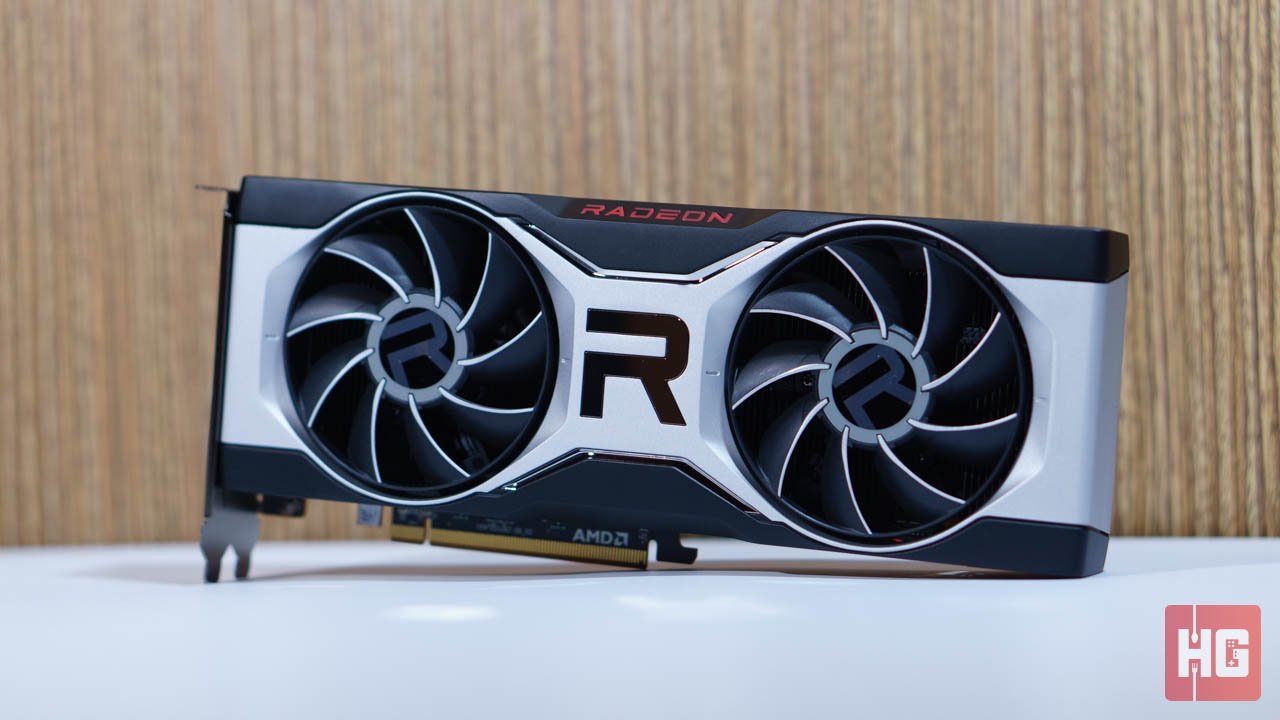
Priced at USD 479 or around PhP 24,000 (hopefully), the AMD Radeon RX 6700 XT shows how much the RDNA2 can efficiently scale regardless of the position of the card. It carefully balances performance and power consumption elegantly while keeping temperatures at a reasonable level.
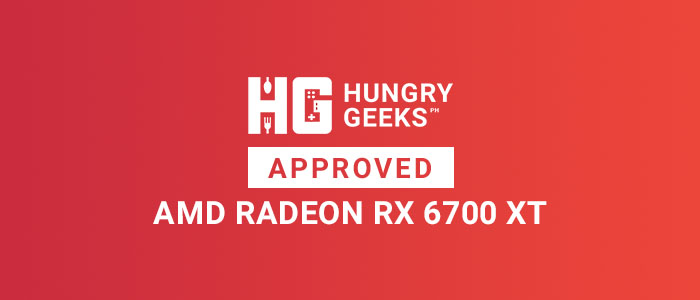
As a midrange card, the RX 6700 XT’s performance is quite potent regardless of the game so long as it strays away from more extravagant effects like Ray Tracing. Overall, it’s a solid effort from AMD and gets our seal of approval as a card you should look out for this generation.
If you fancy other graphics cards, just click on our reviews:
